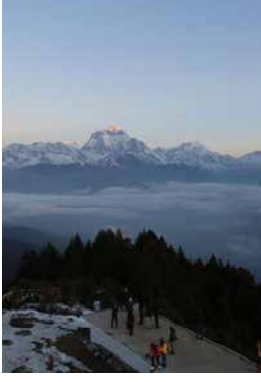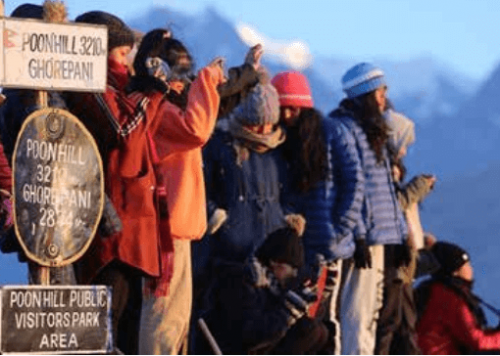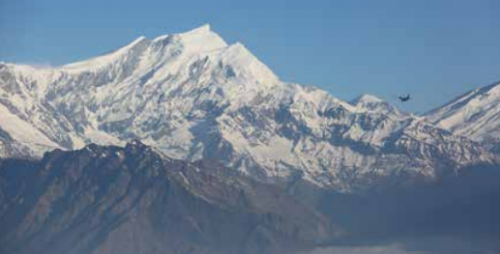
Nepal's tourism still has Mt. Everest to climb
When Nepal’s Minister for Tourism, Culture and Civil Aviation, Yogesh Bhattarai, announced that Nepal would attract 10 million tourists every year after the construction of few international airports, including the much-hyped Nijgadh International Airport, many people in social media shared that it was a hollow statement, some ever saw the joke, though it was not a subject worth to be laughed at. As it is said, “High ambition disgraces nobody,” the ambition itself was admirable. However, the fact is Nepal still lacks too many things to welcome such a large number of foreign tourists.
Poor service

The first and foremost is lack of professional service provided by the travel and trekking companies to the guests. In my recent trek to the popular trekking destination Poon Hill, the company neither provided trek schedule, price details, maps nor any documents that could make our journey easier and comfortable. Besides, we were not advised regarding the necessary luggage that would have better prepared us for the trek. For a group of three, we were given one porter, who could carry 20 kg of backpack, but in contrary we had the double weight of luggage, following which we had to struggle on our own to find another porter on the way. If the company had suggested this to us beforehand, the circumstances could have been different.
Next important factor is time management during trekking. It is natural that the start off and rest time and walking pace of trekkers don’t cut fine with the plan sometimes. In such a situation, the service provider should be smart enough to manage. However, in our case, when we couldn’t reach the stipulated destination, we were compelled to spend our night in a very poor accommodation.
Full of cost traps

My genuine grievances towards the service provider company do not end here. During the journey, I realized that the trekking business is full of traps with regard to consumption and cost factor.
Tourists do come to enjoy the beauty of the country gifted with high Himalayas, among other marvels, by paying a heavy price, but it shouldn’t be a platform for the companies to get hefty benefits. For instance, there was no standard rate for rooms along the trekking route, some charged Rs 150 while some demanded up to Rs 700 for a similar facility. In one case, when I successfully bargained for the room charge, the hotel owner got so anxious that he said I have to pay Rs 500 for a bottle of hot water. The rate is considerable in some locations like the Everest region due to its geographical remoteness, however, such statement in around 2,500 meters altitude was nothing more than anger towards guests, who agreed to pay only reasonable price.
Another factor was the rental of an accessory chain that could make our walk easier in the snow. People rent such items during trekking as it is easier and cheaper to rent them rather than buying.
Thinking the same, we rented the chain for Rs 600, however, later on we learned that to buy the chain would not cost more than Rs 1200, which can be given in rent several times. It made me feel over-charged, or cheated in some way. For transportation from Pokhara to Naya Pool, I again felt cheated by the company, which charged us more than the real cost. The exorbitant price indicates that the market is messy, and some people in the tourism industry are really greedy, so the trekkers must be alert to avoid such traps.
Another lapse I would like to share is about charity fundraising. Trekkers don’t have much idea about the costs they have to bear during their journey. For tax, we paid Rs 3,000 per individual to the company in advance as per their request. But later on, we learned that we had to pay Rs 1000 per person again as environment tax. Protecting environment is a good initiative; unfortunately we even did not find a single dustbin to throw our waste on the way, which made me wonder what the tax really is used for. There should be proper waste management to keep the environment clean and to preserve natural resources.
Need of engaging activities
Trekkers have pre-planned budget and limited time, so it is obvious that they want to gain maximum out of it. Poon Hill trek is particularly popular for the view of mountain ranges like Annapurna and Dhaulagiri and majestic sunrise, however many trekkers had to return without enjoying the view and golden sunrise due to poor weather. Taking such a possibility into account, it is necessary to have weather forecast or weather cams installed so that trekkers can plan their itinerary and enjoy the beauty accordingly. The trekking companies lack such services, which can make the journey tasteless for trekkers. Poon Hill is a beautiful destination as it offers breath-taking view while the trail passes through several interesting villages with different cultures. But there are not many activities to do once you reach the spot besides watching the scenery. During spring and autumn, the spot is packed with travelers from around the world, but in the winter, it’s usually less crowded, almost empty. Keeping such a scenario in mind, the government and tourism professionals must come up with interesting activities to engage tourists and to make their stay longer. There should be some creative ideas to retain the tourists either in summer or in winter.
Snow-economy

For winter, which is usually regarded as off-season for trekking and travelling, snow- related activities and games can be developed in the mountainous areas. Be it ice skating, ski or even ice-hockey, such activities can provide a thrill to the adventure-seekers and they may want to stay longer in the area. We heard about the initiation of some activities like ice climbing festival in Manang, ski in Kalinchowk, and hockey in Gokyo lake. But these were just promotional introductory events limited for the Visit Nepal 2020 campaign. If we look beyond this year, then such events should be held regularly. With the majestic view of mountains in the background, these activities could provide a first-class experience to the travelers and trekkers from all over the world, something which can’t be found in other countries.
On my last trip to Switzerland, I had anticipated that there would be snow everywhere, only to find only some hills and high-altitude areas covered with snow. In Nepal, we have immense potential for snow-related products. Not just for the foreign tourists, but even for the domestic tourists, snow activities hold high value. For instance, I have seen many people from Kathmandu Valley rushing to the Chandragiri Hills whenever there is snowfall, which is usually once or twice a year in the winter. But these people just touch the snow, play there and return without contributing much to the economy. Tourism professionals can make decent earning by organizing snow-related games or other activities.
To share an example, in China’s Sichuan Province, there is a viewpoint from where one can view the most beautiful scenery of mountains. To take a picture on that particular point, one has to pay 100 RMB, which is around Rs 1500. In Nepal, we find such spots almost everywhere in the mountain region. Nepal’s tourism industry can learn from Sichuan and benefit a lot. Tourists are ready to pay if they find the activities worthy and memorable. Nepal has immense potential to generate more revenue from the available resources.


